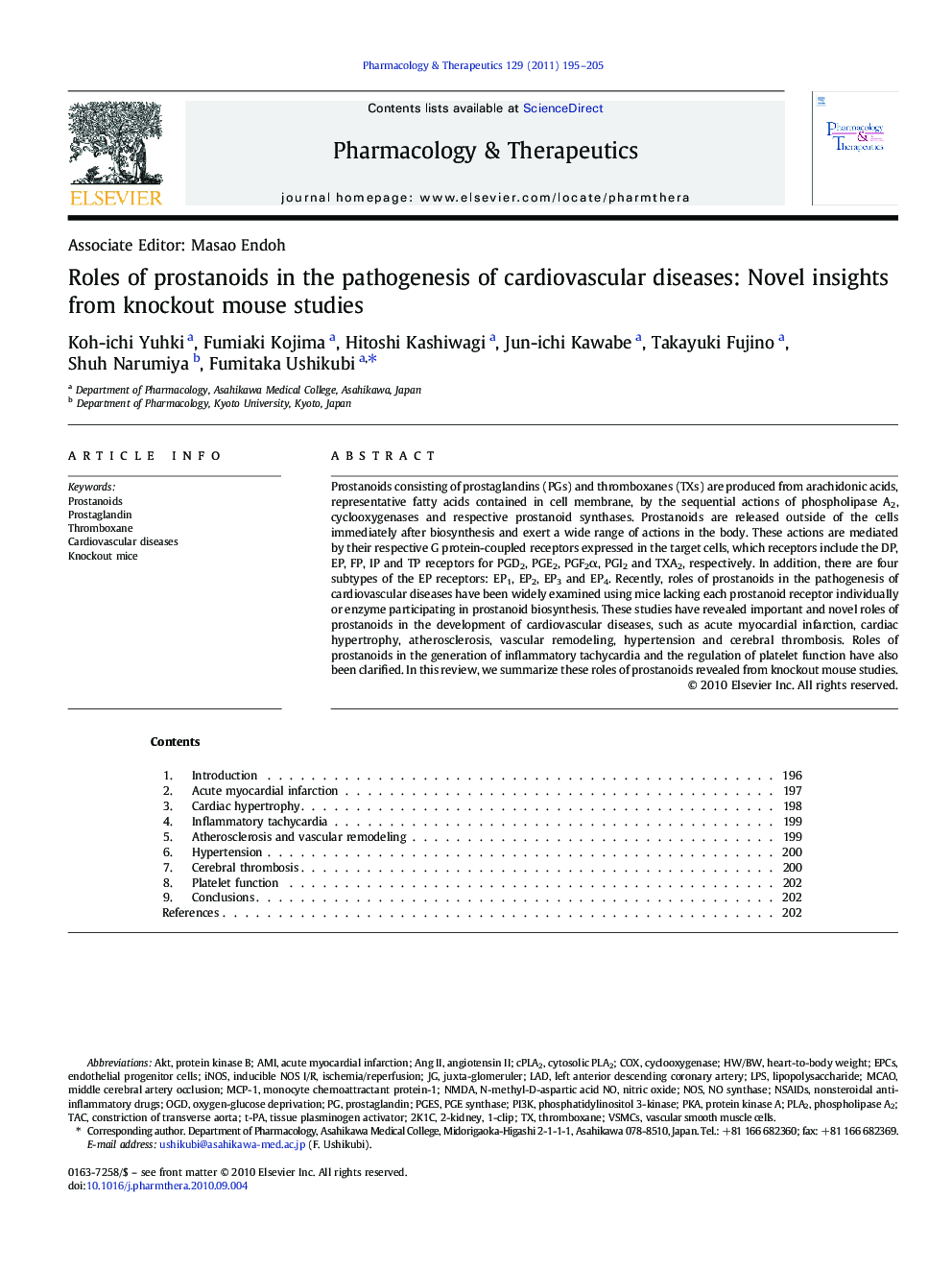| کد مقاله | کد نشریه | سال انتشار | مقاله انگلیسی | نسخه تمام متن |
|---|---|---|---|---|
| 2563429 | 1127531 | 2011 | 11 صفحه PDF | دانلود رایگان |

Prostanoids consisting of prostaglandins (PGs) and thromboxanes (TXs) are produced from arachidonic acids, representative fatty acids contained in cell membrane, by the sequential actions of phospholipase A2, cyclooxygenases and respective prostanoid synthases. Prostanoids are released outside of the cells immediately after biosynthesis and exert a wide range of actions in the body. These actions are mediated by their respective G protein-coupled receptors expressed in the target cells, which receptors include the DP, EP, FP, IP and TP receptors for PGD2, PGE2, PGF2α, PGI2 and TXA2, respectively. In addition, there are four subtypes of the EP receptors: EP1, EP2, EP3 and EP4. Recently, roles of prostanoids in the pathogenesis of cardiovascular diseases have been widely examined using mice lacking each prostanoid receptor individually or enzyme participating in prostanoid biosynthesis. These studies have revealed important and novel roles of prostanoids in the development of cardiovascular diseases, such as acute myocardial infarction, cardiac hypertrophy, atherosclerosis, vascular remodeling, hypertension and cerebral thrombosis. Roles of prostanoids in the generation of inflammatory tachycardia and the regulation of platelet function have also been clarified. In this review, we summarize these roles of prostanoids revealed from knockout mouse studies.
Journal: Pharmacology & Therapeutics - Volume 129, Issue 2, February 2011, Pages 195–205